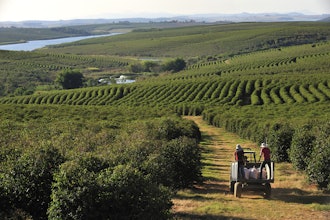
WASHINGTON – The U.S. Department of Agriculture announced Thursday that it will provide close to $2 billion in additional funding to food banks and school meal programs for purchasing American-grown foods.
The additional support will help these organizations endure supply chain challenges and elevated food costs as they continue to fulfill their mission of providing nutritious foods to kids and families in need.
The funds, provided through USDA’s Commodity Credit Corporation, or CCC, will be used in three ways:
- Nearly $1 billion to purchase food for emergency food providers like food banks
- Nearly $500 million to expand the Local Food Purchase Assistance, or LFPA, cooperative agreement program, through which 49 states, 33 tribes, and four territories are already working to purchase local foods for their emergency food systems; and
- Nearly $500 million for schools across the country to purchase food for their lunch and breakfast programs, bringing the total CCC investment in school food since December 2021 to close to $2.5 billion, benefiting the roughly 30 million students who participate in school lunch and 15 million who participate in school breakfast each day.
“Funding these initiatives is paramount in the fight against hunger, and further demonstrates the Biden-Harris Administration and USDA’s commitment to strengthen food and nutrition security,” said Agriculture Secretary Tom Vilsack. “We must ensure Americans have access to safe, healthy, affordable food for longevity and optimal health.”
The investment is part of the Department’s broader commitment to strengthening the supply chain and making nutritious food more accessible for families.
“Food banks and schools are the backbone of our nutrition safety net, serving tens of millions of children and families,” said Stacy Dean, Deputy Under Secretary for Food, Nutrition, and Consumer Services. “The Biden Administration understands that supply chain disruptions and high food costs have created uncertainties for these crucial partners, and we are committed to equipping them with the resources they need to keep communities fed, strong, and healthy.”
“These programs directly connect American producers with food banks and schools, strengthening our rural economies while helping those most in need,” said Under Secretary of Marketing and Regulatory Programs, Jenny Lester Moffitt. “As part of the Biden Administration’s commitment to transforming our nation’s food system, USDA is dedicated to fostering partnerships between producers and food assistance programs. Working together, farmers, food banks, and schools, can improve our nation’s food and nutrition security.”






















